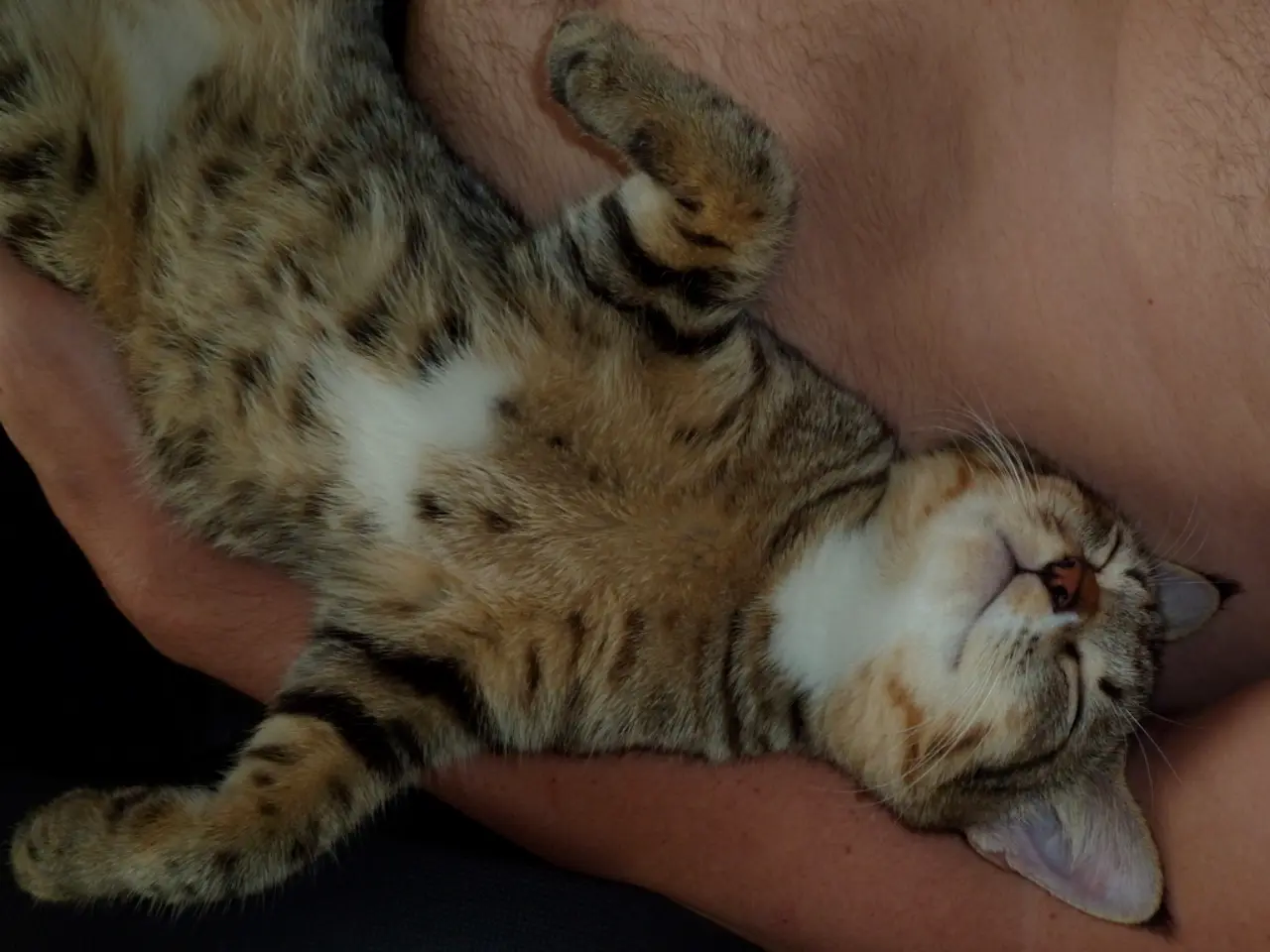Common Heart Diseases in Cats: An Overview
"Feline Heart Disease: Causes, Signs, and Treatment Alternatives"
Cats can be affected by both congenital and acquired heart diseases, which can have significant impacts on their health and wellbeing. Here's a comprehensive look at the common types, symptoms, and treatment options for these heart conditions.
Congenital Heart Diseases
These heart defects are present at birth and less common in cats compared to acquired heart diseases.
Patent Ductus Arteriosus (PDA)
PDA is a condition where the duct between the aorta and pulmonary artery fails to close after birth, leading to abnormal blood flow.
Ventricular Septal Defect (VSD)
VSD is a hole in the septum between the two ventricles, causing blood to leak from one ventricle to the other.
Atrial Septal Defect (ASD)
ASD is a hole in the septum between the two atria, allowing blood to flow from one atrium to the other.
Pulmonic Stenosis
Pulmonic stenosis is the narrowing of the pulmonary valve, obstructing blood flow to the lungs.
Symptoms of congenital heart diseases can include difficulty breathing, fatigue, poor appetite, and failure to grow in kittens. Treatment often involves surgical correction, such as closure of defects or valve repair.
Acquired Heart Diseases
Acquired heart diseases develop later in a cat's life and are more common than congenital heart diseases.
Hypertrophic Cardiomyopathy (HCM)
HCM is a condition where the ventricle's muscle wall becomes too thick, impeding blood flow and leading to heart failure. Symptoms include difficulty breathing, coughing, fatigue, and potentially sudden death. Treatment involves medications to manage symptoms and prevent complications like blood clots, as well as monitoring and managing underlying conditions such as hypertension or hyperthyroidism.
Feline Myocarditis
Feline myocarditis is inflammation of the heart muscle, often due to viral infections. Symptoms can be non-specific, but may include lethargy, difficulty breathing, and arrhythmias. Treatment involves supportive care, including rest and possibly anti-inflammatory medications.
Feline Arterial Thromboembolism (ATE)
ATE involves blood clots that form in the heart and travel to other parts of the body, often blocking blood flow to limbs. Symptoms include sudden onset of limb pain, paralysis, and difficulty breathing. Immediate medical attention is crucial. Treatment involves anticoagulants to prevent further clotting and supportive care.
High Blood Pressure (Hypertension)
High blood pressure can lead to heart damage and failure. Symptoms are often asymptomatic until severe, but can cause vision loss, kidney damage, and heart disease. Treatment involves lifestyle changes and medications to lower blood pressure.
General Approach to Treatment
Regular veterinary check-ups are crucial for early detection and management of heart diseases. Adjustments to diet and lifestyle, such as reducing sodium intake or increasing physical activity under veterinary guidance, may also be necessary. Medications vary depending on the specific disease but often include medications to manage symptoms, reduce blood pressure, or prevent clotting.
Early detection and management are key to improving outcomes for cats with heart diseases. Regular veterinary care and monitoring can help identify issues before they become severe.
- The cat heart has four chambers: the left and right atria on top and the left and right ventricles on the bottom.
- Heart valves ensure proper blood flow through the cat's heart and out to the rest of the body.
- Heart disease in cats can be categorized as congenital or acquired.
- Lethargy, weakness, pale gums, weight loss, stunted growth, sudden collapse, decreased appetite, difficult, rapid breathing, arrhythmia, and sudden hind limb paralysis (indicates a blood clot) are symptoms of heart disease in cats.
- Acquired heart disease in cats occurs later in a cat's life, typically in adulthood.
- Chest X-rays may reveal an enlarged heart, but they do not provide information about the type of heart disease.
- Congenital heart disease in cats is a heart defect that develops during fetal development.
- Unlike dogs, cats with heart disease rarely cough.
- A thin, double-walled protective sac called the pericardium encloses the cat's heart.
- Dilated cardiomyopathy (DCM) occurs when the ventricular muscle becomes thin and flaccid, preventing the ventricle from fully contracting and relaxing.
- Cats with heart disease can enjoy a good quality of life with careful monitoring and management.
- An echocardiogram is the most definitive way to diagnose heart disease, providing a detailed picture of the heart's dimensions and muscle wall thickness and measuring how well the heart can contract.
- A thick wall of muscle called the septa separates the ventricles in a cat's heart.
In the context of heart diseases in cats, proper understanding of both congenital and acquired heart conditions is vital. For instance, congenital heart diseases, such as Patent Ductus Arteriosus (PDA), Ventricular Septal Defect (VSD), Atrial Septal Defect (ASD), and Pulmonic Stenosis, are present at birth, while acquired heart diseases, such as Hypertrophic Cardiomyopathy (HCM), Feline Myocarditis, Feline Arterial Thromboembolism (ATE), High Blood Pressure (Hypertension), and Dilated Cardiomyopathy (DCM), develop later in a cat's life. Regular veterinary check-ups, adjustments to diet and lifestyle, and proper use of medications can help manage these medical-conditions and improve health-and-wellness for affected cats.




